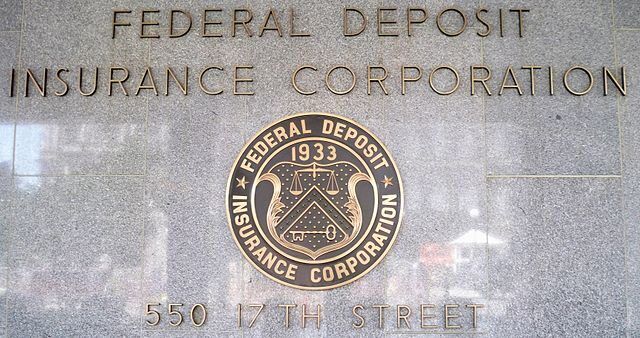Crypto, Fintech Firms Must Stop Using FDIC Logo: Consumer Groups
Consumers may be misled into thinking their money is insured when in fact it is not.

New rules proposed by the Federal Deposit Insurance Corporation (FDIC) are needed to prevent crypto firms and fintech banking apps from misleading customers by representing or suggesting that these companies and accounts are insured by the FDIC, according to comments submitted by more than half a dozen advocacy organizations.
The groups support the FDIC’s proposed rule to address the misuse of the official FDIC sign and logo and suggest ways the rules could be made even stronger.
“People look for the terms ‘FDIC insured’ and ‘Member FDIC’ to trust that their money is safe,” said Carla Sanchez-Adams, senior attorney at the National Consumer Law Center. “When crypto firms and fintech banking apps use the FDIC logo in a way that falsely implies that the consumer’s money is FDIC insured, it could have disastrous consequences for consumers with assets left unprotected.”
The FDIC has increasingly been forced to take enforcement actions against crypto companies for misuse of its name and logo. The proposed rules will add clarity to prevent misuse of the FDIC’s good name and require companies to clearly disclose when assets are not insured.
Last year, several crypto companies were issued cease and desist letters by the FDIC for making false and misleading crypto-related claims regarding deposit insurance. The recent failures of crypto exchanges have made clear the risks to consumers who hold assets there, including assets that may be denominated in dollars as they are transferred to and from crypto accounts.
Cryptos and nonbanks muddy the waters
The FDIC helps maintain stability in the nation’s financial system and has earned the trust of consumers. But the banking landscape has undergone significant changes in recent years, including the rise of crypto exchanges that move money between dollar-denominated accounts and crypto accounts, as well as the proliferation of nonbank banking apps, sometimes offered by fintechs in partnerships with banks.
Additionally, the lines between insured banks and uninsured “banking” apps are becoming increasingly blurry as nonbanks use the official advertising statement and FDIC-associated terms and images in ways that can lead to consumer confusion.
In one example highlighted in the comments, Cash App advertises on its website that “with a Cash Card, your Cash balance is FDIC-insured through our partner banks, which means the federal government promises to protect it.” But Cash App fails to highlight that many funds held through the Cash App are not insured or are not continuously held in insured accounts with pass-through insurance payable to the consumer.
The groups supporting the proposed rules and encouraged the FDIC to strengthen them by:
- requiring nonbanks to clearly, conspicuously, and continuously disclose that they are not a bank and that its non-deposit products are not insured by the FDIC;
- prohibiting nonbanks from using the words “banking” and “bank account” to describe their products or services offered; and
- requiring nonbanks to disclose that even if they partner with an FDIC-insured bank, customer funds sent to the nonbank are not FDIC-insured unless and until the nonbank deposits them in an FDIC-insured bank and holds them in a manner in which they are eligible for pass-through insurance.
The groups also urged the FDIC to provide a model official advertising statement in the eight languages most frequently used by limited English proficient consumers.
“Clearer rules are needed to prevent bad actors from misusing the FDIC’s name to deceive consumers and to clarify for consumers the limitations when nonbank companies purport to offer banking services,” said Sanchez-Adams.
The comments were also signed by the Americans for Financial Reform Education Fund, Better Markets, Consumer Federation of America, Consumer Reports, Public Justice Center, Public Good Law Center, Student Borrower Protection Center, and U.S. PIRG.
